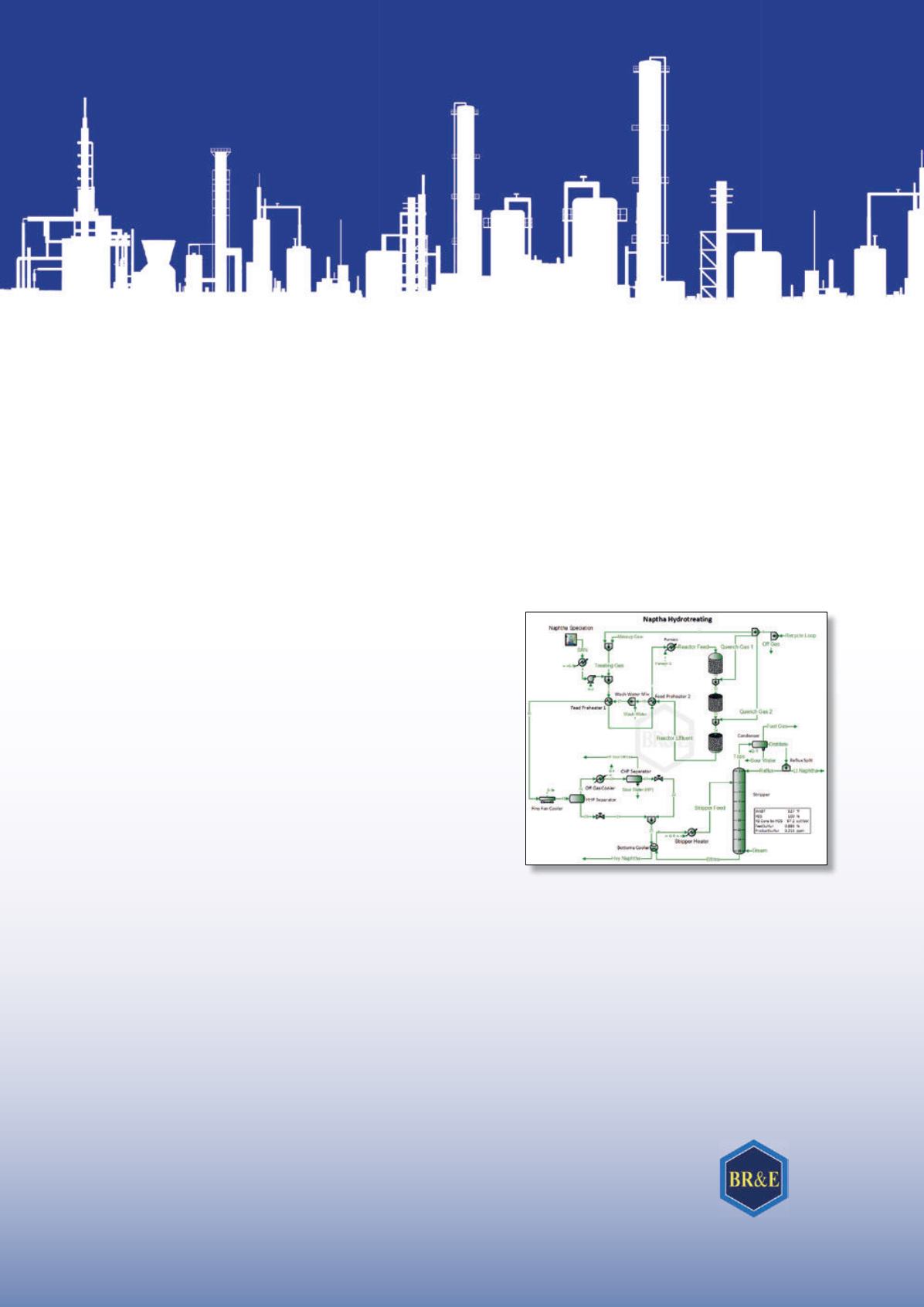
Process Insight:
Beginning in 2017, TIER 3 regulations will reduce
corporate average sulfur in gasoline from 30 wppm to 10
wppm. New regulations are expected to strain existing
refinery configurations at a time when the US gasoline
market is increasing its reliance on low-octane feedstocks
from shale and experiencing a turnaround in domestic
demand. Uncertainty on future refining margins requires
refiners to place a significant emphasis on flexible planning
and process debottlenecking to meet target quality and
product slate.
Planning models make extensive use of linear
programming to maximize margins through stream
allocation and blending optimization. Accurate prediction
of future plant performance in the form of process vector
yields is critical. Likewise, the successful estimation of
process vector yields must include: (1) rigorous modeling
of process equipment, (2) comprehensive simulation of the
process layout, and (3) fast evaluation of multiple scenarios
for optimization. Under conventional approaches, these
models occur at different levels. The rigorous process
equipment models are utilized to provide generalized
performance criteria to the process simulator. The process
simulator links together performance criteria from multiple
equipment models in a process layout. Optimization
routines then evaluate multiple scenarios within the process
layout. The complexity of the conventional layered
approach reduces the efficiency of scenario testing and,
ultimately, reduces the likelihood of identifying bottlenecks
and locating the optimum configuration.
All of these distinct models may be moved into a
single simulator using ProMax
®
. In refinery simulations,
ProMax replaces traditional boiling-based pseudo-
components with species that provide chemical meaning
to oil fractions. The AutoKinetic™ reactors in ProMax
make use of these species to generate reaction sets and
their corresponding rate expressions according to the strict
chemical rules governing the process. ProMax AutoKinetic
reactors provide users with a suite of rigorous reactor
models to simulate refining and other hydrocarbon reactor
processes. A typical process layout for Gasoline Production
would include Blending, Fractionation, Caustic Treatment,
Amine Treating, Naphtha Hydrotreating (Figure 1),
Catalytic Reforming, Isomerization, Alkylation, Selective
Hydrogenation (SHU) and Selective HDS (Post-treating) of
Catalytic Naphtha.
Combined with the ProMax Scenario Tool™,
AutoKinetic reactors can be used to debottleneck and
optimize blend stocks and yields in gasoline production
trains. By translating regulatory frameworks into targets
for sulfur, Reid vapor pressure, and octane number,
ProMax users have the ability to evaluate the benefits and/
or shortcomings of different process scenarios and test for
imbalances, performance losses, surplus capacities as well
as to identify opportunities for new capital projects under
variable pricing structures and crude availabilities while
getting ready to meet TIER 3 gasoline sulfur levels.
For more information about this topic and other capabilities of ProMax®
please visit our website -
ProMax® process simulation software by Bryan Research & Engineering, Inc.
Engineering Solutions for the Oil, Gas, Refining & Chemical Industries
Advances in Reactor Modeling Streamlines
Gasoline Production Debottlenecking
Figure 1


